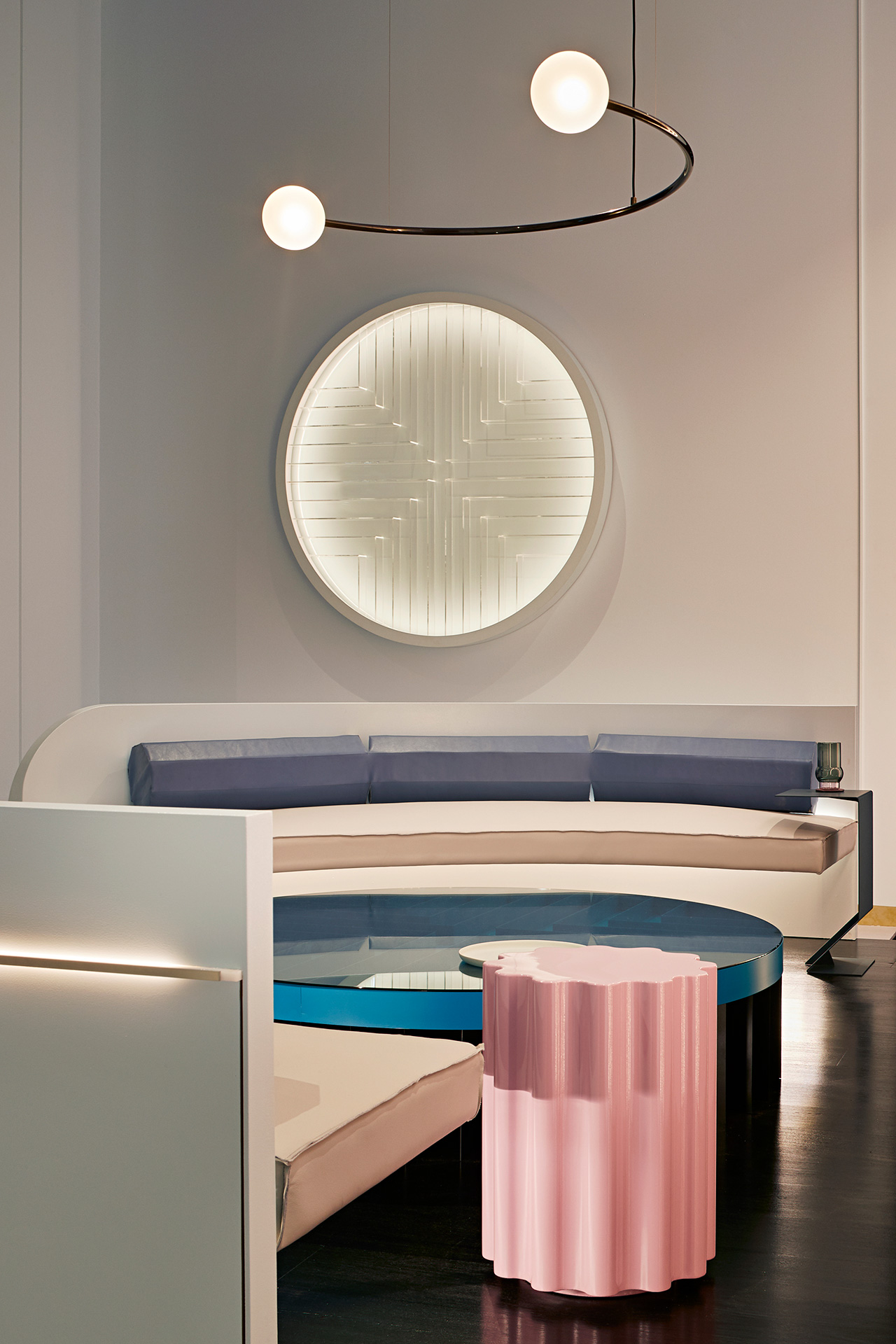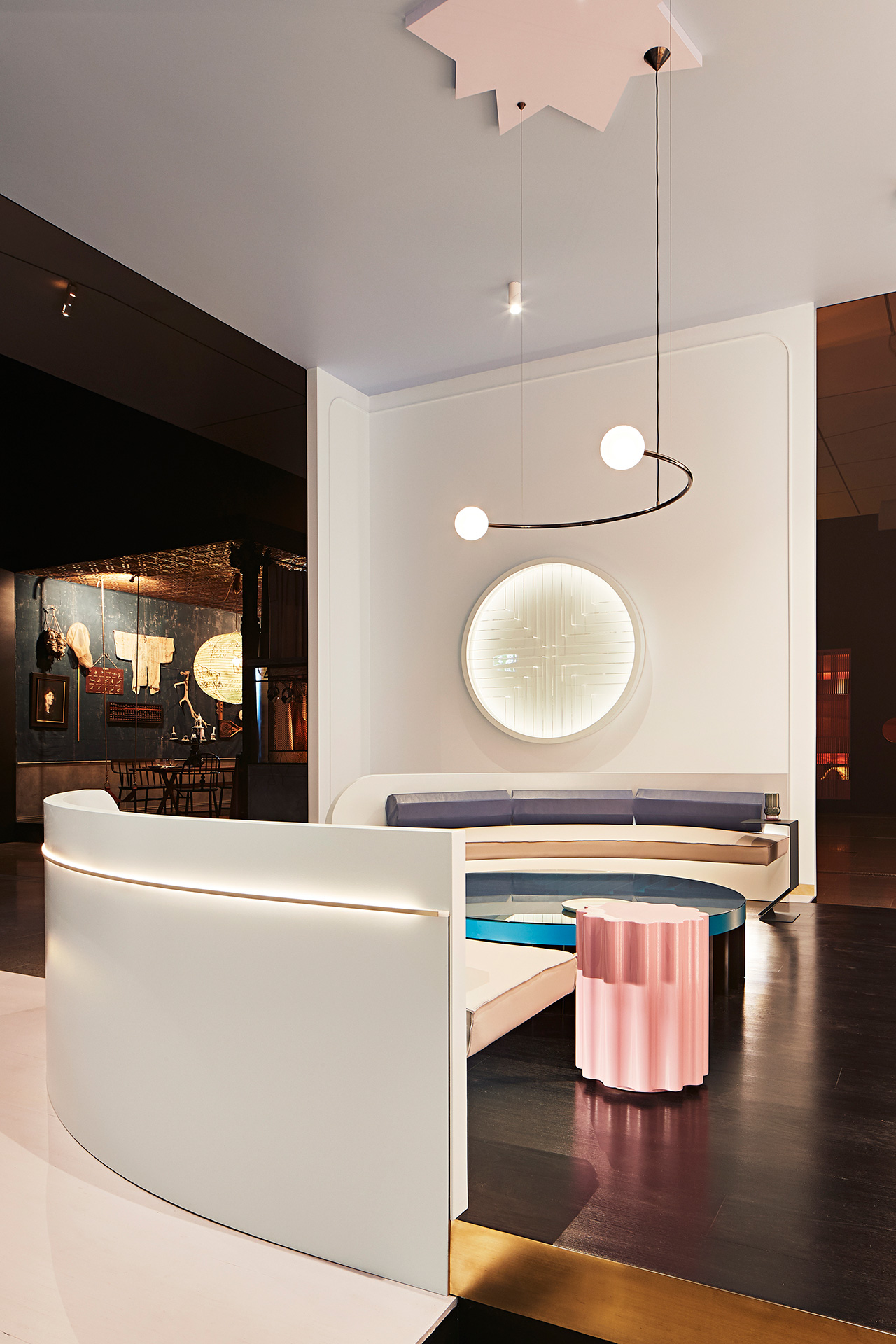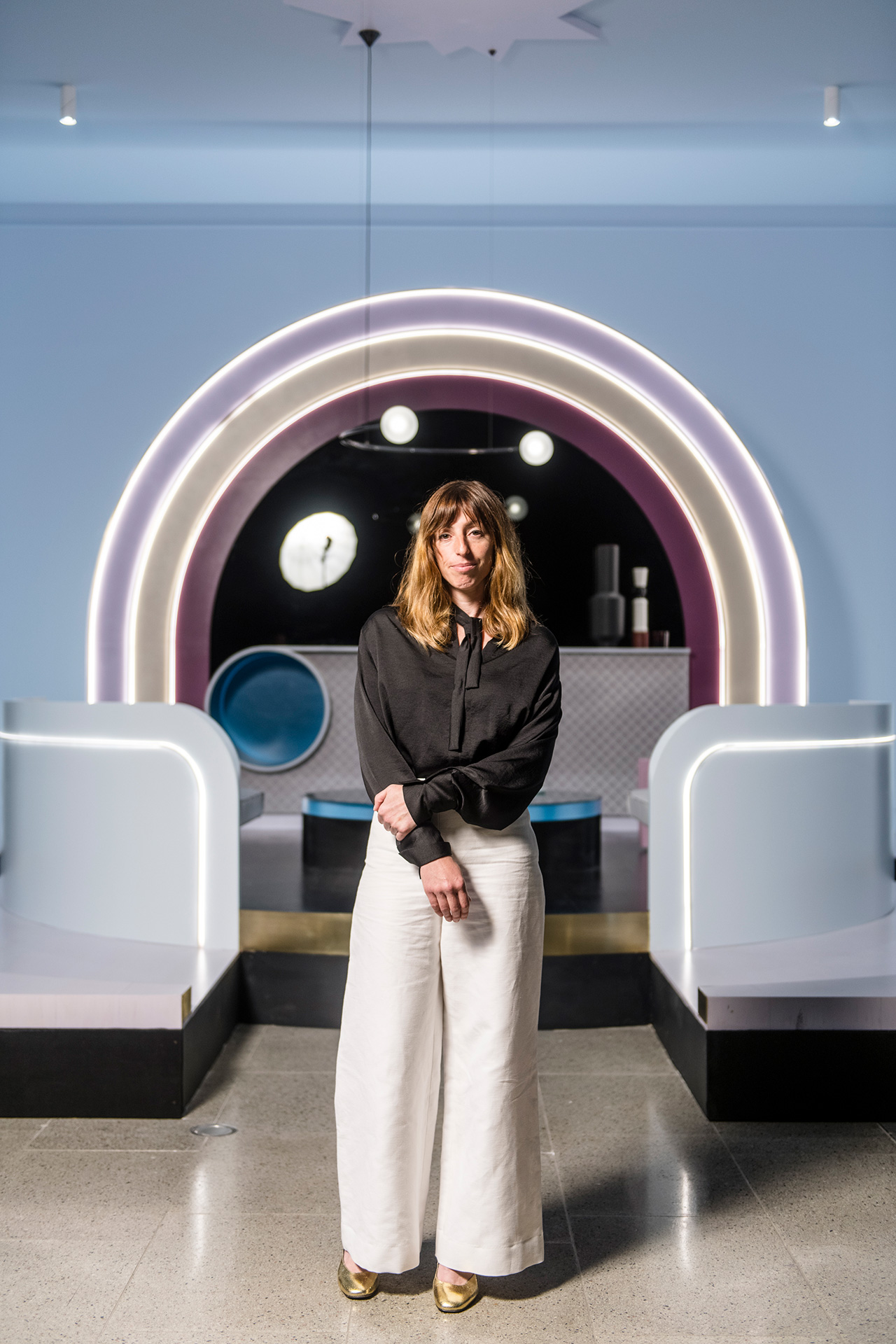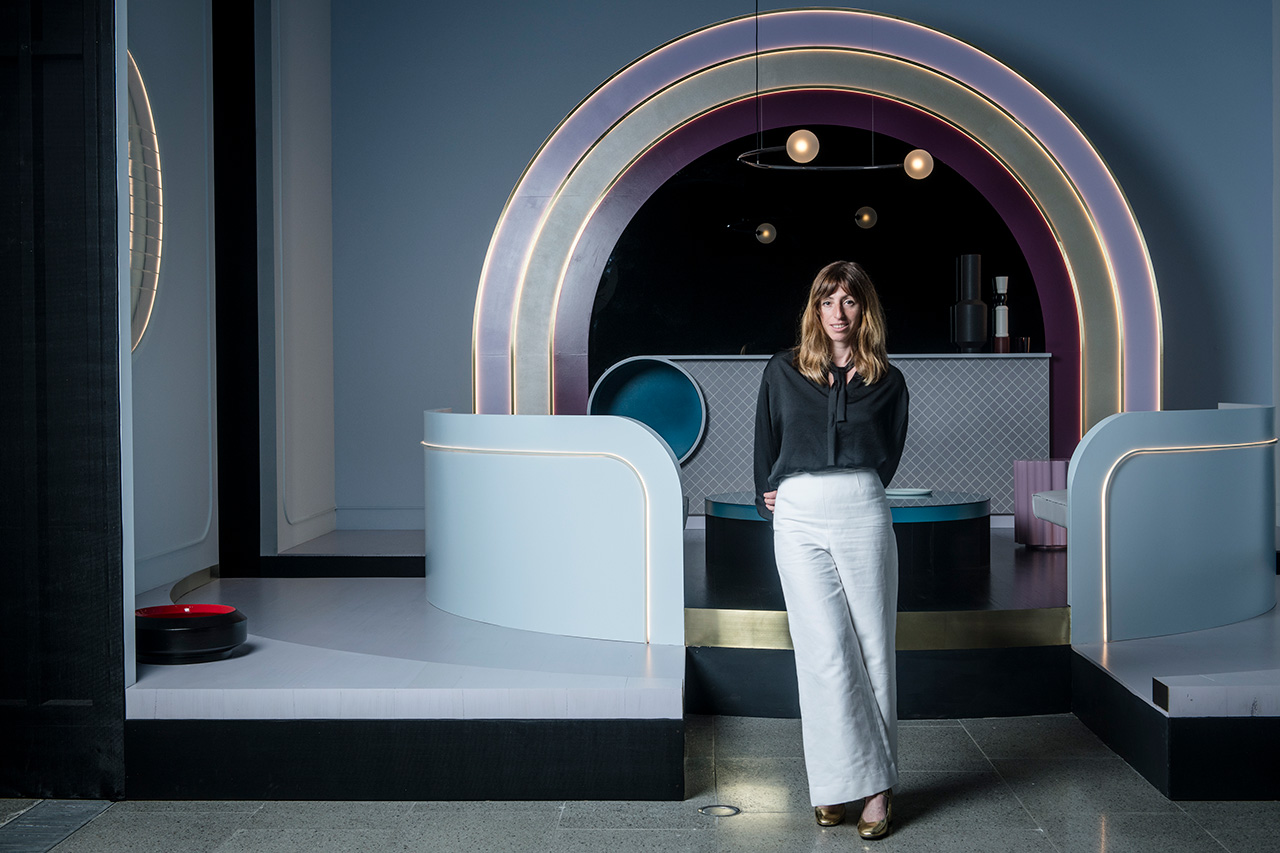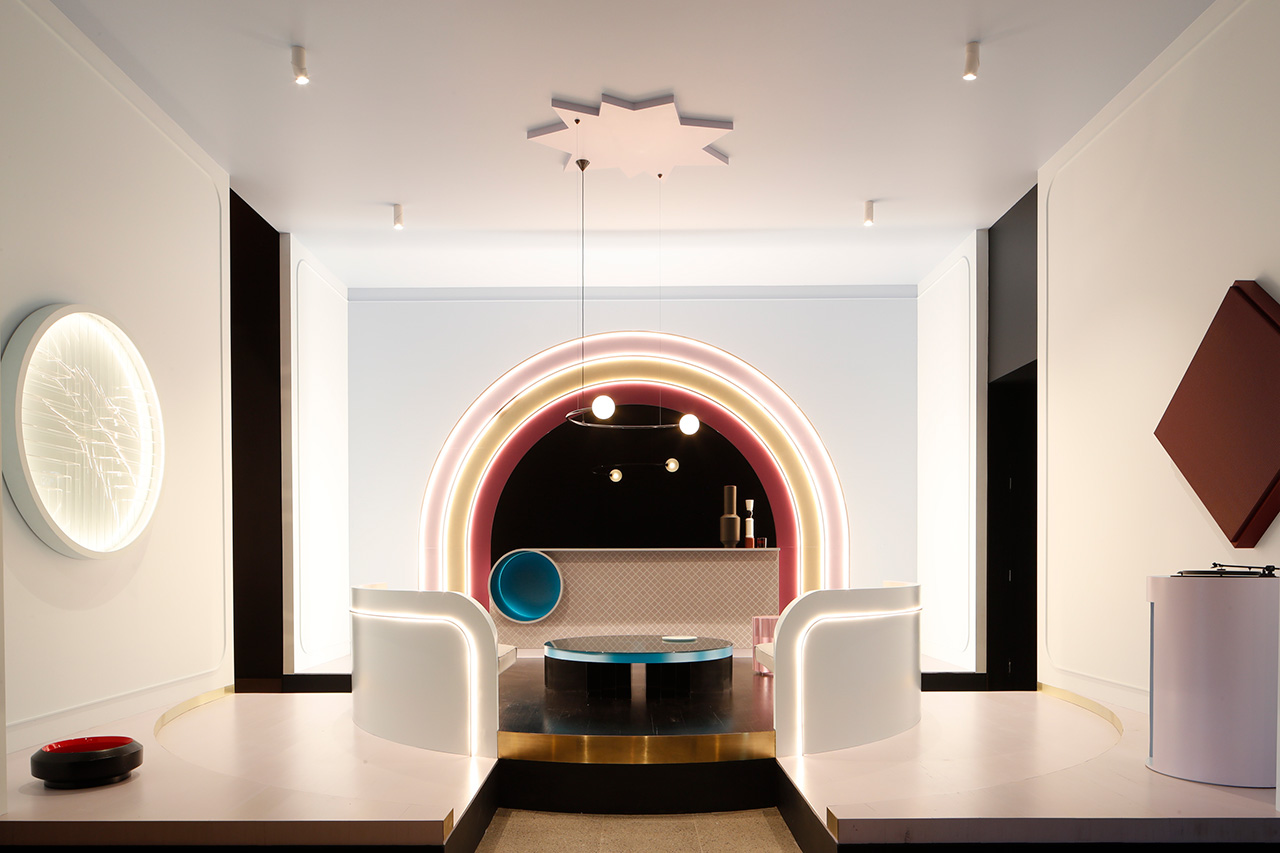News feed
It’s rare that a designer (or anyone, really) is afforded the opportunity to convey with utmost specificity what the interior of their psyche looks like. After all, who amongst us would be willing to share in the details that experience would involve? Unless you’re permitted to grace a designer’s private home, it’s rarer still that you should be invited to step inside such an interior should one exist. It’s apt, then, that standing in front of Danielle Brustman’s Inner-Terior should feel a little bit like trespassing on the designer’s private thoughts, like crossing the threshold into a private, inner sanctum – albeit an incredibly stylish one.
The title of Brustman’s work, Inner-Terior, provides some insight into the theatrical space the designer conjured as part of her submission for the 2018 Rigg Design Prize. A triennial initiative, the Rigg Design Prize is the first major presentation of contemporary interior design in the National Gallery of Victoria’s history, and, perhaps more broadly, in Australia. This year, the invitational competition tasked 10 of the country’s eminent interior designers with responding to the theme of ‘domestic living’. In practical terms, it was a remit that required they fashion from the ground up a single bespoke, purpose-built example of interior design, which, as a proposition for new modes of living, is a practice distinct from interior architecture and acknowledges that great spaces are indispensable to creative cultures that respond, in the most pragmatic way, to human needs.
As new developments in our cultural spaces demand a greater understanding of spatial experience and how our environments directly impact on our experience of life in myriad ways, an initiative like the Rigg Design Prize has never felt more pertinent. Then there’s the fact that, in our hyper-saturated, image-driven, design-savvy age of Insta gratification, where trends have become both increasingly potent and prone to shorter lifespans, innovations in design built to withstand the whims of fashion have never felt more vital.
Each of the submissions to this year’s Rigg Design Prize contained a world therein. Impossibly dense and oftentimes deeply personal, the groundbreaking showcase is an energising display of the industry’s extraordinarily diverse talents. There isn’t a single entry that you wouldn’t risk a lifetime ban from the gallery for if only for the chance to cross the threshold and explore the multitudes contained within. Luckily, Brustman’s Inner-Terior was one of the few installations structured in such a way that a walkway invites the viewer in. The result – to borrow the experiential phrase du jour – is entirely immersive.
Brustman’s initial thought was to create an interior within an interior, she revealed at a preview of the exhibition at the Ian Potter Centre in Melbourne last month. “It’s an exploration or expression of something that comes from within,” said Brustman, whose interior takes stylistic cues from Art Deco design (the band shells of the 1920s) and film history – the 1980 classic Xanadu, in particular. “I was exploring the idea of the fantastical and inserting the fantastical within the domestic space. I brought in these references which seem a little disparate in a way but for me have been rich sources of inspiration in my childhood and in my adult life and practice as a designer.” Part performance space and part conversation pit, Brustman’s Inner-Terior – a proposition for inspired domestic life – gives its hypothetical occupant permission to explore behaviours and attitudes not conventionally suited to our homes, and perhaps even the way we think of ourselves in those spaces.
Brustman, who works largely in residential interior design, also has a long history of designing for the stage and theatre. “Theatre has been a place where I have spent many years working,” she said. “It’s a place which is endlessly inspiring for me and now, working in interior design, I bring some of those qualities from theatre and those devices that I’ve used in my work as a set designer through to my interior design for domestic living.” Included amongst those: a stage, a vinyl record player and stage-worthy spotlighting.
Then there are the exquisite objects, pieces and fixtures that Brustman designed: a ‘Crossroads’ perspex circular light 1.5 metres in diameter was designed by Brustman and made by Alex Earl; a ‘Crossroads’ coffee table was designed by Brustman and made by Prosculpt Solutions, as well as purple leather octagonal bolsters designed and crafted by the designer. Then there were the curated finishing touches: the ‘Colonia’ stools designed by Ettore Sottsas; a single ‘Oddments’ pendant light was designed and manufactured by Volker Haug; ceramic vases were contributed by Arik Levy and Nathalie du Pasquier; and a ‘Mark’ table by Moroso also featured – all cast in roles that elevated the performance of the entire ensemble.
Those performative elements of domestic life were hinted at through the overarching tone of Brustman’s work. “My piece is very much about storytelling,” Brustman said. “This is me telling some kind of story to an audience but the idea is that potentially the occupants of this space get to express themselves and tell their story as well.”
THE RIGG DESIGN PRIZE IS EXHIBITING AT THE IAN POTTER CENTRE: NGV AUSTRALIA AT FEDERATION SQUARE FROM OCTOBER 12 UNTIL FEBRUARY 24, 2019. ENTRY IS FREE. MORE INFORMATION IS AVAILABLE HERE.
Tile and cover image: Shannon McGrath/Courtesy of the National Gallery of Victoria





